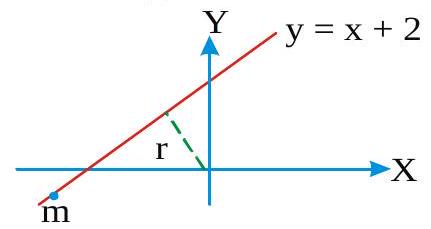269531 A uniform cylindrical rod of mass\(m\) and length \(L\) is rotating with an angular velocity \(\omega\). The axis of rotation is perpendicular to its axis of symmetry and passes through one of its edge faces. If the room temperature increases by ' \(t\) ' and the coefficient of linear expansion is \(\alpha\), the change in its angular velocity is
269582 A uniform metal rod of length \(L\) and mass \(M\) is rotating about an axis passing through one of the ends perpendicular to the rod with angular speed \(\omega\). If the temperature increases by \(t^{\circ} \mathrm{C}\) then the change in its angular velocity is proportional to which of the following?(Coefficient of linear expansion of \(\operatorname{rod}=\alpha)\).
269531 A uniform cylindrical rod of mass\(m\) and length \(L\) is rotating with an angular velocity \(\omega\). The axis of rotation is perpendicular to its axis of symmetry and passes through one of its edge faces. If the room temperature increases by ' \(t\) ' and the coefficient of linear expansion is \(\alpha\), the change in its angular velocity is
269582 A uniform metal rod of length \(L\) and mass \(M\) is rotating about an axis passing through one of the ends perpendicular to the rod with angular speed \(\omega\). If the temperature increases by \(t^{\circ} \mathrm{C}\) then the change in its angular velocity is proportional to which of the following?(Coefficient of linear expansion of \(\operatorname{rod}=\alpha)\).
269531 A uniform cylindrical rod of mass\(m\) and length \(L\) is rotating with an angular velocity \(\omega\). The axis of rotation is perpendicular to its axis of symmetry and passes through one of its edge faces. If the room temperature increases by ' \(t\) ' and the coefficient of linear expansion is \(\alpha\), the change in its angular velocity is
269582 A uniform metal rod of length \(L\) and mass \(M\) is rotating about an axis passing through one of the ends perpendicular to the rod with angular speed \(\omega\). If the temperature increases by \(t^{\circ} \mathrm{C}\) then the change in its angular velocity is proportional to which of the following?(Coefficient of linear expansion of \(\operatorname{rod}=\alpha)\).
269531 A uniform cylindrical rod of mass\(m\) and length \(L\) is rotating with an angular velocity \(\omega\). The axis of rotation is perpendicular to its axis of symmetry and passes through one of its edge faces. If the room temperature increases by ' \(t\) ' and the coefficient of linear expansion is \(\alpha\), the change in its angular velocity is
269582 A uniform metal rod of length \(L\) and mass \(M\) is rotating about an axis passing through one of the ends perpendicular to the rod with angular speed \(\omega\). If the temperature increases by \(t^{\circ} \mathrm{C}\) then the change in its angular velocity is proportional to which of the following?(Coefficient of linear expansion of \(\operatorname{rod}=\alpha)\).
269531 A uniform cylindrical rod of mass\(m\) and length \(L\) is rotating with an angular velocity \(\omega\). The axis of rotation is perpendicular to its axis of symmetry and passes through one of its edge faces. If the room temperature increases by ' \(t\) ' and the coefficient of linear expansion is \(\alpha\), the change in its angular velocity is
269582 A uniform metal rod of length \(L\) and mass \(M\) is rotating about an axis passing through one of the ends perpendicular to the rod with angular speed \(\omega\). If the temperature increases by \(t^{\circ} \mathrm{C}\) then the change in its angular velocity is proportional to which of the following?(Coefficient of linear expansion of \(\operatorname{rod}=\alpha)\).
